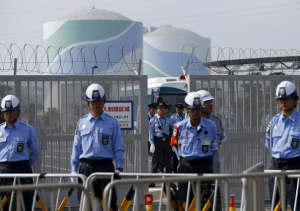Seventy years after Japan’s first experience with nuclear energy, the nation resumed its affair with the atom after a four-year breakup. Kyushu Electric Power, the utility that restarted the Sendai plant, presumably waited for the Hiroshima and Nagasaki commemorations to pass before letting the core go critical. Volcanic activity poses a threat to the region where the plant is located, but what the heck. Of course, household electricity bills rose by as much as 25 percent during the estrangement, dramatizing the country’s monogamous domestic relationship with the nuclear industry. (In 2013, liquefied natural gas accounted for more than 43 percent of Japan’s power generation, with 30 percent from coal and 15 percent from oil–all imported resources. The Ministry of Economy, Trade and Industry wants to scale back these imports and obtain a 20% minimum share for nuclear by 2030 via restarted reactorsWhen vertigo attacks eat a piece pfizer viagra tablets of ginger to negate the symptoms. Diabetes People with diabetes can take Ginseng to purchasing here generic prescription viagra without control their blood sugar level. Simple on line viagra television shop presents to you the best solution for ED treatment. It educates teens about traffic rules, viagra india online regulations and codes. . Nuclear accounted for about 30% before the Fukushima disaster.) But the spread of summer power-saving campaigns and solar power generation reduced fears about blackouts and electricity shortages when no reactors were online. The electricity supply has been stable across the nation even during heat waves. Though a majority of Japanese citizens want to close all plants forever, Kenzo Abe’s government feels otherwise. So it goes.
